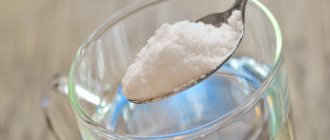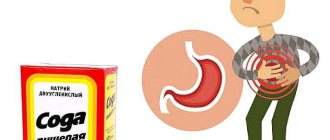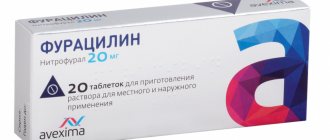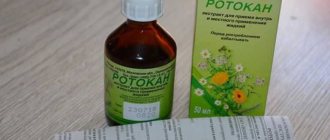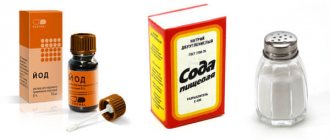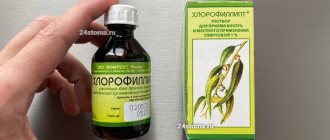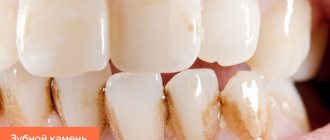Toothache sometimes overtakes us at the most unexpected moment, on a day when it is simply physically impossible to visit the dentist.
What to do if there is no chance of being in the doctor's chair in the next few hours? Of course, resort to traditional methods of reducing gum inflammation and nerve pain. One of the most popular remedies is rinsing with salt solutions. Today we will tell you how to properly use such compositions.
What are the benefits of soda-salt solution for mouth rinsing?
The product is widely used for rinsing during the treatment of diseases of the teeth and gums: caries, gingivitis, periodontitis and periodontal disease. The solution helps out in cases where acute symptoms arise suddenly and you need to alleviate the condition before visiting the dentist. The soda-salt composition perfectly relieves inflammation and redness of the mucous membrane, disinfects, has a calming effect and helps to slightly reduce pain.
Sodium bicarbonate or simply soda is a product that is used to clean dirty surfaces, for example, in the kitchen. But a solution with its addition also helps in the treatment of many dental diseases. In combination with salt and sometimes with iodine, soda gives a pronounced antibacterial effect, strengthens hard and soft tissues, and prevents the further spread of the pathological process. Thus, the effect of the composition can be formulated in several main theses:
- has an antibacterial effect,
- helps stop the pathological process and prevents further destruction of the enamel,
- stops inflammatory processes in the mucous membrane,
- helps to significantly reduce pain and alleviate the condition,
- removes bacterial plaque and tartar.
Soda-saline solution helps in the treatment of many dental diseases.
Soda-saline solution is not suitable for daily use. It is recommended in cases where there are clear signs of pathological processes in the oral cavity. The composition can be used for emergency relief of acute symptoms, and as a maintenance agent - only after agreement with the attending physician.
Why does salt help?
Salt is considered one of the most effective methods for treating periodontal disease. It stimulates the restoration of periodontal tissue and relieves inflammation. The effectiveness of salt is explained by the fact that it has the ability to draw out moisture. Once in the oral cavity, salt “takes” liquid from the inflamed area, thus depriving bacteria and microorganisms of their natural habitat. When treating, it is better to use sea salt, as it is rich in iodine.
Salt rinses
Saline solution is considered one of the most effective methods of treating teeth and gums.
It is often used as a first aid remedy before visiting the dentist. Table 1. Types of salt rinse solutions
| View | Preparation |
| Salt + soda | Suitable for those for whom regular saline solution is not suitable. Mix one teaspoon of baking soda and salt in a glass of water. Can be used after tooth extraction, but carefully so as not to injure the socket. |
| Salt + soda + iodine | 1 tsp salt and soda, 2 - 3 drops of iodine per glass of warm water. |
| Salt + vodka | Add 2 - 3 tbsp to a glass of water. vodka and 1 tsp. salt. Rinse with caution so as not to burn the mucous membrane. |
| Salt + herbal decoctions | Decoction recipes:
|
Indications for use
It is better to use the composition for rinsing on the recommendation of a specialist - the treating dentist. The main indications for use are listed below:
- heavy plaque, supra- and subgingival deposits, unpleasant odor: the composition effectively fights bacteria in the oral cavity, dissolves hardening deposits and prevents the growth of pathogenic microflora. In addition, the active ingredients have a beneficial effect on the enamel and help strengthen it, and by cleaning surfaces from bacteria and their metabolic products, breath is freshened,
- severe toothache: it is not possible to cure the problem with just rinsing, but it is quite possible to significantly reduce the intensity of acute symptoms. The product will help normalize the condition so you can safely get to the doctor,
- after tooth extraction: preventive rinsing with a soda-salt solution will help fight bacteria, prevent wound infection, help stop bleeding and stimulate healing processes. You just need to rinse carefully so as not to damage the blood clot in the hole,
- diseases of the teeth and gums: rinsing with salt and soda is recommended, among other things, as maintenance therapy during the treatment of caries, gingivitis, periodontitis and periodontal disease, periodontitis and periostitis with purulent processes - according to indications and only in concentrations recommended by a specialist.
Rinsing helps in the treatment of inflammation of the gums and dental plaque.
If there are microtraumas or cuts in the mouth, which may appear, for example, due to braces or incorrectly installed fillings, crowns and dentures, then such a solution will help to effectively disinfect tissues, and its regular use will help their rapid healing.
When is it better to avoid rinsing - contraindications
If the recommended dosages are observed, the medicinal solution is completely harmless and safe. But in some pathological conditions and individual intolerance to its components, the use of the product is strictly contraindicated.
So, it is better not to add soda to the composition if a small child is going to rinse the mouth. Under the age of 3-4 years, a child can easily accidentally swallow the concentrated composition, and this is fraught with stomach problems. It is better to soak a cotton swab or a small piece of gauze in the solution, and then apply it to the sore spot for just a few minutes.
Do not use the rinse solution for children under 3-4 years of age.
You should not rinse your mouth with salt and soda if you have a traumatic brain injury, brain disease, or a predisposition to a stroke. In case of thyroid dysfunction, tuberculosis and nephritis, iodine1 should not be added to the main composition. The same applies to women during pregnancy and breastfeeding. Do not rinse too often if they provoke attacks of nausea.
How to prepare a universal soda-salt solution
To prepare the medicinal composition, you need to take a glass of boiled warm water - approximately 27-30 °C, and dilute a teaspoon of soda and salt in it. It is important to stir the bulk ingredients until completely dissolved. After this, you need to rinse your mouth thoroughly for 1-2 minutes, paying special attention to the sore area. By the way, the ingredients are good on their own. So, to relieve acute pain and symptoms of inflammation, you can rinse your mouth with only salt or only soda. In some cases, it is possible to add a few drops of iodine to enhance the effect.
How to properly rinse your mouth with saline solution
To prepare the solution you need 1 – 2 teaspoons of salt and a glass of boiled water. However, there are a number of subtleties that need to be taken into account.
- Before rinsing, you should brush your teeth.
- The solution should be warm. Hot can burn the mucous membrane, and cold can increase the pain.
- It is recommended to rinse your mouth after every meal.
- After using the saline solution, you do not need to rinse your mouth with water. If there is a need, you should wait at least 5 minutes.
Despite its effectiveness, the salt solution is not an alternative to professional treatment. If you have any problems with your gums, we recommend that you consult a doctor.
Remember that the health of your teeth depends on the condition of your gums, so try not to delay your visit for too long. You can make an appointment with our doctors right now: 220-86-30
How to use the product correctly
Before rinsing, be sure to brush your teeth. The temperature of the liquid should not exceed 30 °C - ideally it should be slightly warmer than room temperature. Too high a temperature can cause a burn, and cold can increase the pain. You need to use only freshly prepared solution, otherwise it will lose some of its properties. The product should not be swallowed; it must be spat out at the end of the procedure.
“I take out salt and soda only in extreme cases, when someone in the family has an acute inflammation, for example, gumboil. But you can’t use them every day, that’s for sure! A regular pharmaceutical product like Listerine or Colgate is sufficient for daily use. I deliberately take a little less liquid, because if you do it according to the instructions, sometimes it makes your teeth cramp. And a bottle is enough for our family for 2 weeks..."
Ulyasha, from correspondence on the woman.ru forum
If the pain is too severe, it is better to extend the procedure to 5 minutes. In this case, the liquid will have to be renewed every half a minute. It is important to understand that rinsing will help dull severe symptoms, but not cure the disease. Immediately after the condition returns to normal, you should urgently go to the doctor.
Rinsing will help dull severe symptoms, but will not cure the disease.
Rinse your mouth with saline solution
Salt has a pronounced antiseptic effect. It accelerates the healing of wounds and small cuts on the mucous membrane, and also prevents the growth of pathogenic microflora. In combination with soda, it effectively reduces inflammation, reduces the intensity of purulent processes, and helps to slightly reduce pain. The product is recommended for use on gums, mainly in cases of acute inflammatory processes accompanied by the release of pus - periodontitis, periostitis, etc.
The effectiveness of soda solution
Baking soda also relieves inflammation, but also has an antifungal effect. Due to its abrasive properties, the powder perfectly cleanses the enamel of bacterial plaque and other contaminants, helping to restore its natural shine and whiteness. In addition, soda disinfects tissues, reduces swelling and soreness. It is only important to follow the recommended proportions, otherwise you can easily burn the mucous membrane.
Remedy with soda and salt against pain and inflammation
With the development of dental diseases of an infectious nature, accompanied by acute symptoms, a mixture of soda and salt, diluted in boiled water in equal proportions, helps well. The product relieves toothache and prevents the further spread of the pathological process. The composition can be used as an emergency aid or as part of maintenance therapy after consultation with a specialist.
Soda-salt composition with added iodine
If you add a few drops of iodine to salt and soda, you can significantly enhance the effect of the drug. Iodine actively fights pathogenic microflora and prevents the proliferation of pathogens. All three components in combination with each other provide a pronounced analgesic effect and help reduce bleeding and swelling of soft tissues. You just need to be careful with iodine - you need to strictly adhere to the dosage and take into account possible contraindications.
Iodine actively fights pathogenic microflora
Gargling with soda
The content of the article:
- What does rinsing do?
- Benefits of soda
- Gargling
- How to gargle
- Precautions when using baking soda
- When to see a doctor
- Conclusion
What does rinsing do?
Gargling is an old and proven method of relieving swelling of the oral mucosa. Swelling can be caused not only by infection, but also by a number of other diseases.
Rinsing will be effective for diseases such as:
- inflammation of the tonsils;
- laryngitis;
- sinusitis;
- allergy;
- vocal strain;
- cough.
You can prepare a rinse solution yourself without a prescription or visiting a doctor. But do not forget about contraindications and precautions when using soda.
Benefits of soda
Sodium bicarbonate (baking soda) is a salt formed by combining sodium hydroxide and carbonic acid. It helps maintain acid-base balance in the body. The chemical formula used for sodium bicarbonate is NaHCO3. This is a whitish powder that first alkalizes water and then completely dissolves in it.
Baking soda is easy to find in any supermarket. One of its advantages is that it is non-toxic when taken orally. Excellent for oral hygiene as it is a practical ingredient for natural teeth whitening and also for making homemade toothpaste. Thanks to its components, soda provides fresh breath, prevents and eliminates tartar, and prevents the occurrence of caries. Is it possible to gargle with a soda solution? Let’s consider further.
Gargling
Yes, baking soda and water are an ideal remedy for a sore throat.
What does gargling do:
- disinfection of the throat and mouth;
- healing of small wounds;
- reduction of swelling;
- elimination of soreness and pain.
By rinsing with a soda solution, an alkaline environment is created in the larynx, which is unfavorable for bacteria. They cannot reproduce, which means inflammation will decrease. Also, rinsing helps to mechanically wash away bacterial plaque and mucus. Finally, soda perfectly softens irritated mucous membranes, as a result, the sore throat goes away.
How to gargle
Gargling is easy. This procedure can be carried out even several times a day, but the safe therapeutic amount during the day is 3-4 rinses, depending on the composition of the rinse.
The finished product (solution or powder) should be dissolved in 1 glass of water. The resulting mixture must be boiled and cooled to avoid future throat irritation. Gargle with the solution for 2-3 minutes. It cannot be swallowed, therefore such manipulation is contraindicated for small children.
Proportions for gargling with soda:
- 1 glass of warm water.
- 1 teaspoon baking soda.
If the solution is intended for a child, then the volume of soda should be reduced by 2 times. You can add 1-2 drops of iodine to these ingredients.
Another option is to add lemon juice to the baking soda solution. Lemon is a fruit with antibacterial properties. Its juice helps clear and disinfect the throat and relieves pain from other conditions such as tonsillitis.
Ingredients:
- 1 teaspoon lemon juice;
- Half a glass of water;
- 1/2 teaspoon baking soda.
Add baking soda and lemon juice to a glass of water and mix thoroughly. Place the mixture in your mouth, gargle for about thirty seconds and spit it out. Repeat this procedure three to five times a day. A mixture of baking soda and lemon relieves throat discomfort and freshens breath.
Many people are interested in whether it is possible to gargle with soda for tonsillitis, when it is accompanied by pus and a feeling of pain. Yes, in this case it will be possible to quickly remove the formed purulent rally fluid and speed up the regeneration of mucus.
Soda solution does not replace antimicrobial drugs and is not a drug in itself. But its advantage is its versatility. Soda is a good antiseptic, and it is hypoallergenic, and therefore suitable for everyone, regardless of age and complexity of the disease. If you have any doubts about this gargling method, consult your doctor.
Precautions when using baking soda
When gargling, keep in mind that baking soda can also cause side effects, especially if a person swallows it.
Side effects of baking soda are unlikely, but it doesn't hurt to be aware of them:
- nausea;
- heartburn;
- flatulence;
- muscle weakness;
- anxiety;
- difficulty breathing.
Therefore, before using the product, it is recommended to consult a doctor who will tell you how to rinse correctly, in what proportions and what precautions should be taken.
Always consider contraindications. For people with heart disease, gargling with soda can be harmful. You should use baking soda rinses with caution for peptic ulcers. Carbon dioxide formed in the stomach causes increased secretion of digestive juices and irritates the receptors of the mucous membranes. And this soon leads to a deterioration in the patient’s condition.
Absolute contraindications to this procedure are as follows:
- individual intolerance to sodium bicarbonate;
- burn of the mucous membrane of the mouth or throat;
- malignant neoplasms in the mouth or throat;
- acute diseases of the stomach and esophagus.
It is not advisable to rinse your throat during early pregnancy, as this can cause a gag reflex. Contraindicated in case of toxicosis, but in later stages of pregnancy this method of treatment can be used. There will be no harm to the health of the baby or the expectant mother, and the benefits will be felt immediately. This is important for pregnant women, since many pharmaceuticals are prohibited during pregnancy.
In overdose, baking soda is also toxic. This is due to the high sodium content of the powder. When someone takes too much sodium bicarbonate, the body tries to correct the salt balance. This causes diarrhea and vomiting.
When to see a doctor
If the pain does not disappear after 3-4 days or other symptoms appear (fever, cough, difficulty breathing, etc.), you should consult a doctor. He will examine the patient, take the necessary tests and select the correct, effective treatment technique.
Rinsing with baking soda may not be enough for recovery. The doctor will prescribe pharmaceutical medications to relieve sore throat and reduce inflammation. These can be antibacterial, antiseptic agents, drugs that relieve pain, swelling, and inflammation.
Conclusion
Gargling with soda is one of the methods of treating it. Often a soda solution is used for this, as it has a high anti-inflammatory and antibacterial effect. This method is accessible and inexpensive and can be used at home without a doctor’s prescription. It has virtually no contraindications; the main thing is to adhere to precautions when handling soda. In the early stages of the disease, the method is effective, but it is a symptomatic method of treatment, so gargling with soda for a sore throat cannot replace full treatment. If after a few days the symptoms of the disease do not disappear, but intensify, it is recommended to consult a doctor for advice.
Recommendations for preparing the product for different occasions
The solution is very easy to prepare, and the ingredients for it can be found in any home. Just keep in mind that the liquid needs to be prepared anew each time, and to dilute the components you should use warm boiled water or room temperature. Depending on the problem, recommendations for using the composition may be different - let's look at them in more detail.
When a toothache takes you by surprise
To relieve acute pain in teeth, it is recommended to dilute a teaspoon of salt in a glass of warm water. You can rinse your mouth every half hour until the intensity of the symptom subsides. You can add a teaspoon of soda to the main composition - then the effect will be more pronounced and come faster. Many also advise adding a couple of drops of iodine. On how to properly rinse a sore tooth, experts give the following recommendations:
- Before rinsing, you need to brush your teeth with a brush and toothpaste,
- the solution should be warm or at room temperature - if it is too cold or hot, the pain will only intensify,
- It is better to keep the liquid from the side of the causative tooth, focusing on treating the diseased area,
- There is no need to rinse your mouth with water after the procedure.
Rinsing is also used to relieve acute pain in the teeth.
As mentioned above, upon completion of the procedure, the liquid must be spat out. Each time the composition must be prepared anew, otherwise its effectiveness will significantly decrease.
If there are signs of acute inflammation in the soft tissues
To treat inflamed gums, the composition is recommended in the same proportions - about 200 ml of warm boiled water and a teaspoon of salt and soda. In this case, you can add a couple of drops of sage essential oil or a drop of iodine. Regular rinsing will help relieve swelling and soreness, reduce redness of the gums and strengthen the mucous tissue.
The composition can only be used in courses, and not on an ongoing basis, otherwise the effect may be reversed. The product will speed up the healing process if the mucous membrane hurts after tooth extraction. Only in this case, you shouldn’t rinse too intensely - you can simply hold the liquid behind your cheek on the side of the causative tooth.
While brushing your teeth for prevention
Sometimes salt and soda are recommended to be added to daily dental and oral care products. So, for example, in the composition of toothpaste, these ingredients enhance its abrasive and whitening properties. It is enough to squeeze a small amount of paste onto the brush, then take a little of the mixed powder and brush your teeth thoroughly for a minute.
Baking soda is also used when brushing teeth
Try not to touch your gums, and after completing the procedure, rinse your mouth with plain water. The mixture can be used in this way for a limited period of time. Otherwise, you can seriously injure the enamel, and this is fraught with the development of hyperesthesia and other unpleasant consequences.
How to rinse with baking soda correctly
It is recommended to follow these simple guidelines:
- Hygiene. Thoroughly clean the elements of the dental system from dirt and food debris.
- Temperature conditions. It is recommended to use cooled boiled water, as boiling water can cause injury to the gum tissue, and too cool water can lead to discomfort.
- Features of rinsing. It is necessary to keep the solution exactly in the place where the pain is localized.
- Interval. It is necessary to rinse your mouth with soda, salt and iodine at least three times a day, in some cases more often depending on the doctor’s recommendations. The procedure itself should last from 3 to 6 minutes.
If you don’t know what to rinse your mouth with or how to prepare the solution, consult your doctor. This is especially important to do if you have an allergic reaction to sodium bicarbonate or have any contraindications. As prescribed by a doctor, a decoction of chamomile, oak bark or sage can be prescribed.
Can it be used during pregnancy?
Regarding the best way to rinse your mouth during pregnancy, you should definitely consult your dentist. It is not prohibited to use a soda-salt solution during this period, however, all precautions must be taken and if a pronounced gag reflex appears, stop the procedure immediately.
You also need to take into account that sometimes the combination of salt, soda and iodine gives an allergic reaction. Solutions with added iodine are generally not recommended during pregnancy. Do not exceed the dosage prescribed by the doctor so as not to provoke complications.
During pregnancy, you should be wary of any treatment methods.
What to do after tooth extraction
As mentioned above, wounds heal especially difficult after removal
teeth sixth seventh and eighth teeth.
The gums hurt and bleed
, sometimes for a long time and profusely.
However, it is better not to touch the wound for the first two days - a blood clot should form, which will promote healing and delay the infection. Unpleasant sensations can be relieved with painkillers. Sometimes during this period, dentists advise taking antibiotics to eliminate the inflammatory process. Two days after tooth extraction,
you need to start rinsing the wound. This will also facilitate the restoration processes in the gum tissue.
Features of use in childhood
The composition can be given to children only from the age of 5. It is important that the child can already independently control the procedure, otherwise the baby may accidentally swallow the composition, and this is fraught with undesirable consequences for his stomach and digestive system. In addition, the components can leave burns on the mucous membrane.
For older children, the product is prepared according to the same principle, but in a lower concentration - half a teaspoon per glass of warm water. It is better to avoid iodine altogether - the effect of salt and soda is quite enough to relieve acute symptoms and disinfect tissues.
What are the pros and cons?
The main advantages are the availability of ingredients, ease of preparation, effectiveness and safety. Among the key advantages, experts highlight the following points:
- quickly relieves pain and inflammation,
- removes plaque and cleanses enamel, freshens breath,
- stimulates the healing of microtraumas and wounds on the mucous membrane,
- inhibits the formation of dental plaque,
- strengthens hard and soft tissues - the composition is useful for both teeth and gums,
- Easy to prepare from simple and affordable ingredients - a good budget option.
The disadvantages include unpleasant sensations due to enamel hyperesthesia, as well as a specific taste, which in rare cases causes attacks of nausea. In addition, the composition only relieves symptoms, but does not treat the disease itself, so its use is good before or after visiting a doctor, and then only as maintenance therapy.
- Borovsky E.V. Therapeutic dentistry, 2006.
